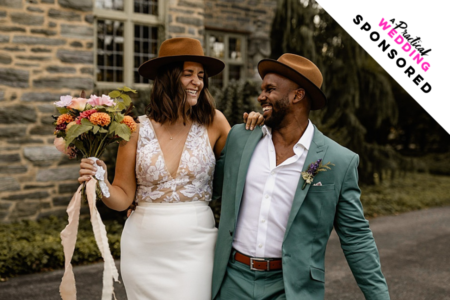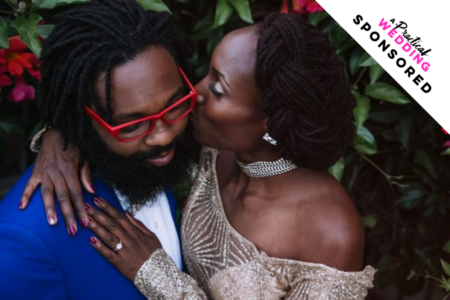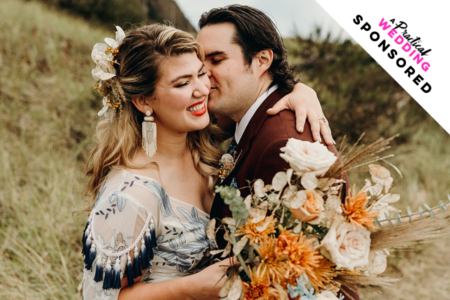This afternoon’s post comes with a trigger warning: it is a non-graphic essay about a couple’s journey to recovery after an incident of domestic violence. We debated whether not or publish this, but ultimately we feel that it fits within the APW mission to think and talk about writing that pushes us to empathize in new ways. That said, this post isn’t something that everyone can interact with safely, and we’ve put the post break early to allow readers to disengage from it. This post should not be read in any way as advice. It is simply one person telling the story of their own experience. APW is not endorsing this plan of action, or the book mentioned in the post. If you, or anyone you love is dealing with issues of domestic violence, we urge you to reach out for help immediately. In the United States you can reach the National Domestic Violence Hotline at 1−800−799−SAFE.
We understand that a post like this is going to elicit strong emotions in the comments, but as always we ask that any commentary refrain from judging the author and their choices, or from offering advice (both the author and partner are getting therapy). We will be more careful than usual in moderating the discussion today, so if your comment gets moderated, please understand that it comes not from a place of judgment, but from a desire to keep the comments a safe space for both the author and the community at large.
—Meg
by Anonymous
I’ve been the person who wonders, “What is she thinking?” when someone reunites with a violent partner. This winter I will marry him. I did not judge Rihanna harshly.
First: I feel it’s important to emphasize that domestic violence happens without regard to race, education, or income. That was a surprise to me. Somehow, I thought I was too smart to be affected, as an Ivy Leaguer with a doctorate. I was wrong. Second: what helped me more than anything was the book Why Does He Do That by Lundy Bancroft, a man who counsels abusers. While the title is heteronormative, the author addresses resources for same-sex abuse. Ultimately, an abuser’s underlying issues of selfishness, disrespect, and control are the same regardless of sexual orientation, race, education, or income.
I am not affiliated with Bancroft or his work, but the book is incredible. It is on your side. It goes through every excuse the abuser, your friends, and even your therapist might make for the abuse. I heard several of those excuses time and again, and the book gave me invaluable tools to reject anything less than the dignity I deserve as a human being. There is also a helpful chapter on the process of change, for moving past the incident with the abuser.
Both Bancroft and my (tough, smart, loving, social worker) sister emphasize that it’s rare for abusers to truly move beyond the self-centered mindset that allows them to use force against their partners in the first place. This fact is my stumbling block; not my partner’s, mine. We’re on a good path. He has done all the “right” things, I have no serious doubts…but I have moments of wonder. Am I really “that” woman? In weaker moments, I’ve Googled for writing by people in successful relationships with formerly abusive partners. I haven’t found much yet.
To be clear, though Bancroft wouldn’t make the distinction, D. didn’t hit me. We had issues, certainly, but after his mother’s death last year, D. became increasingly surly, distant, and at times downright mean. I was told by friends with experience that this is common after the death of a parent, so I just tried to be present for him. As his depression became more apparent, friends and I suggested (and sometimes pleaded for) therapy, but he refused to go. Desperately, I clung to “being present” without seeing much change. A few months later, driving through Minnesota on a stressful visit to his family, D. and I had our first ever yelling argument. He stopped the argument by seizing me bodily and dragging me out of the car onto the freeway.
It shattered me emotionally—no partner had ever put hands on me before—and the sheriff who happened to be nearby wasn’t too happy either. (The sheriff took my report and warned me about domestic violence, but discouraged me from pressing charges. “That would be bad for him.” Numb, I agreed.) I believe if D., who is easily twice my size, had hit me, I wouldn’t be writing this because there would be no “us” and no wedding. As it was, I immediately moved out of our apartment and refused to see him. I had the support of good friends. His friends harshly rebuked him but also offered him support, which made me glad. It’s crucial for rehabilitation: an abuser’s actions cannot have support from peers. I thought it would be worse for him alone.
I also heard responses that were surprisingly empathetic toward him, from two female friends. “Everyone has their trigger.” “You were upset.” Immediate correction helped me keep my cool and some sanity. Triggers don’t necessarily involve putting hands on a loved one. Put another way, D. and I had surprisingly similar childhoods of physical, sexual, and emotional abuse—and I have never used force against a partner, nor would D. ever have hauled his abusive mother out of a car. I reminded him of this each time he offered the abuse excuse. As Bancroft predicted, D. also blamed me. (“You’ve never yelled at me before. You played a part.”) I wouldn’t accept anything less than total acceptance of responsibility for resorting to force; otherwise, according to experts, escalation of violence is assured. Full admission, which he gave three days later, was the only way healing could begin. D. now refers to it as hitting bottom.
We were both devastated. D. started going to therapy multiple times per week. He discovered truckloads about the toxicity of his upbringing, which helped quite a bit. He had misplaced anger for decades. But Bancroft actually warns against individual therapy for an abuser, and recommends that the partner at least have regular contact with the abuser’s therapist. And Bancroft proved correct again: without meeting me, despite my asking her, the therapist began to verbally attack me for exposing what D. had done to our close friends. That was shocking to me and upsetting to him. (She also prescribed me reading: Women Who Love Too Much, again while refusing to meet me or speak with my therapist. I can laugh about that…now. I thanked her and read it, to give her a fair shot. It was interesting but not quite pertinent.) It made me realize how deeply ingrained violence against women is in society; she empathized with D. so much that I became the target. Now he goes to group sessions, which is Bancroft’s primary recommendation. D. has formed close friendships in this group, with men who have attended for decades, and plans to go for the rest of his life.
Eventually, D. and I visited a therapist with whom I have a good relationship; I’d seen her previously to help with my own abuse. I openly asked her to vet him and she gave me the validation I sought: D. is on a path to health and understands the factors behind what happened. I also started working on myself in a group, specifically for my Fear of Intimacy (that’s my mugshot in the dictionary next to the term). There’s a reason I chose a partner who was capable of violence. I’m not victim-blaming; I know this was not my fault. Still, I had accepted D.’s self-centered behavior long before his mother’s death, because it allowed me to stay at arm’s length myself. It’s simple but true: abused people don’t like to get close. But I got tired of feeling perpetually relationship-challenged. Facebook is our ideal face, sure, but all the wedding and baby posts are rather striking juxtaposed against being dragged onto the interstate (which I, uh, didn’t post on Facebook).
The relationship was torn down to its foundation. Carefully, we’re rebuilding on our patched selves. D. eventually convinced me to give us another go, tearfully: “You once asked if I had any girlfriends who got away. You are the one who got away*, and I’ll regret it for the rest of my life. You are the most beautiful person I know. And you are the only woman who ever accepted me for who I am.” He cries freely at emotional events now, happy and sad, which astonishes me. After dating a few months** we had sex again, and the new intimacy there…almost sent me running, I won’t lie. (I nearly cried. Freaked me out, man.) Over time I’m finding, delightedly, that I truly love this man. There are significant, respectful changes in how we interact; his defensiveness is gone. So are his criticisms; he now accepts that I am a human being with faults. He actually listens to what I’m saying. The pressure is off, and I don’t have to be the one taking the temperature of our interactions all the time.
It’s rare, but occasionally I feel wary. Not afraid, not intimidated, but wary. It’s nothing he’s said or done; it’s me. The statistics for repeat incidents of violence are like flashing neon signs in my head (48%). I drew solid boundaries: I will not visit Minnesota in the foreseeable future, and a second use of force is the immediate end of us. He readily agreed and promised not to let me or himself down again. But sometimes I can’t help but think of how common it is for anyone to fall off their wagon. If I do so, I distance myself; if he does, my well-being is in danger. And if that happens, well of course dummy, you knew what you were getting into, he fooled you twice! But on the other, balanced hand: it was “just one” episode, we’re getting healthy, and things are genuinely different this year. Our close friends are miraculous to me, I don’t understand how they’ve managed to be supportive of both of us, but they do it. My therapist says to trust my smart-lady gut. I guess that’s all I can do; there are no guarantees for any relationship.
But this intimacy thing…it feels really good. It also feels like a safeguard against future violence. So here’s to the redemption of the 52%.
*Um. It was actually very sweet and not as creepy as it reads. Less Hannibal Lecter, more Jerry Maguire.
**By far the longest I’ve ever waited after a first date. I don’t think chastity is a virtue. But it was very useful to me during a difficult time. Learning to be intimate involved a brief abstinence from sex, my previous vehicle for faux-intimacy.
Photo: Kelly Benvenuto Photography







